The Race to Save the Lord God Bird (20 page)
Read The Race to Save the Lord God Bird Online
Authors: Phillip Hoose

BOOK: The Race to Save the Lord God Bird
12.33Mb size Format: txt, pdf, ePub
Chapter Four. Two Collectors
James Tanner's introductory quote on p. 35 appears on p. 19 of his book
The Ivory-billed Woodpecker.
The Ivory-billed Woodpecker.
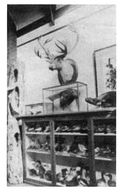
The description of Charleston on p. 35 (“a city of ⦠vacant houses”), attributed to a “writer,” appears in Joy Hakim's
A
History of Us
(New York: Oxford University Press, 1994), vol. 7, p. 13.
A
History of Us
(New York: Oxford University Press, 1994), vol. 7, p. 13.
Several articles in
The Auk
were especially helpful in this chapter. In Arthur T. Wayne's “Notes on the Birds of the Wacissa and Aucilla River Regions of Florida,”
The Auk,
vol. 12 (1895), pp. 364â67, Wayneâin the quote appearing on p. 43âblames “the crackers” for the decline of the Ivory-bill along a Florida river. William Brewster and Frank M. Chapman describe a grand trip down the Suwannee River, during which they shot an Ivory-bill, in “Notes on the Birds of the Lower Suwannee River,”
The Auk
, vol.
7
, no. 2 (April 1891), pp. 125â38.
The Auk
were especially helpful in this chapter. In Arthur T. Wayne's “Notes on the Birds of the Wacissa and Aucilla River Regions of Florida,”
The Auk,
vol. 12 (1895), pp. 364â67, Wayneâin the quote appearing on p. 43âblames “the crackers” for the decline of the Ivory-bill along a Florida river. William Brewster and Frank M. Chapman describe a grand trip down the Suwannee River, during which they shot an Ivory-bill, in “Notes on the Birds of the Lower Suwannee River,”
The Auk
, vol.
7
, no. 2 (April 1891), pp. 125â38.
Henry Henshaw's description of the equipment he took with him on a collecting expedition (sidebar, “Market Hunters,” on p. 40) appears in Mearns,
The Bird Collectors,
p. 56.
The Bird Collectors,
p. 56.
There is a splendid memorial biography of William Brewster by Henry Wetherbee Henshaw in
The Auk, vol.
37
,
no. 1 (January 1920), pp. 1â32.
The Auk
also published an equally impressive memorial tribute to Arthur T. Wayne by Alexander Sprunt, Jr., in vol. 48, no. 1 (January 1931), pp. 1â16. Here I found the quote about Wayne appearing on p. 37.
The Auk, vol.
37
,
no. 1 (January 1920), pp. 1â32.
The Auk
also published an equally impressive memorial tribute to Arthur T. Wayne by Alexander Sprunt, Jr., in vol. 48, no. 1 (January 1931), pp. 1â16. Here I found the quote about Wayne appearing on p. 37.
Information about Wayne's collecting activities in Florida in 1892â94, including his letters to Brewster, are found in the Special Collections Department of the Ernest Mayr Library of the Museum of Comparative Zoology, Harvard University, in files under “William Brewster” and “Ivory-billed Woodpecker.” There you will find Wayne's quotes on pp. 41 and 41â42 and the price list on p. 42. For information about the Charleston Museum and Wayne's activities on its behalf I consulted Albert E. Sanders and William D. Anderson, Jr.,
Natural History Investigations in South Carolina: From Colonial Times to the Present
(Charleston: University of South Carolina Press, 1999). The quote from Elliott Coues on p. 43 comes from Mearns,
The Bird Collectors,
p. 19, as does the quote on p. 44 that begins “Collecting provided a convenient and socially acceptable excuse,” at p. 21.
The Bird Collectors
contains material on the technique of taxidermy, on cabinet collectors, market hunters, Ward's Natural Science Establishment, the world ranking by number of specimens of Brewster's collections, and a little about Brewster himself.
Natural History Investigations in South Carolina: From Colonial Times to the Present
(Charleston: University of South Carolina Press, 1999). The quote from Elliott Coues on p. 43 comes from Mearns,
The Bird Collectors,
p. 19, as does the quote on p. 44 that begins “Collecting provided a convenient and socially acceptable excuse,” at p. 21.
The Bird Collectors
contains material on the technique of taxidermy, on cabinet collectors, market hunters, Ward's Natural Science Establishment, the world ranking by number of specimens of Brewster's collections, and a little about Brewster himself.
The Henry Augustus Ward Papers, documenting the life and times of the founder of Ward's Natural Science Establishment, are in the Rare Books, Special Collections, and Preset-vation department of the Rush Rhees Library of the University of Rochester, New York. Consult
www.lib.rochester.edu/rbk/haward.stm
.
www.lib.rochester.edu/rbk/haward.stm
.
I discovered more about Wayne through interviews with Dr. Will Post and Dr. Albert E. Sanders of the Charleston Museum.
Chapter Five. The Plume War
Graham's
The Audubon Ark
tells of Frank Chapman's stroll in New York City counting birds on women's hats. Graham also presents the story of Harriet Hemenway, including, at p. 15, the quote from her cousin Minna Hall (pp. 49â50). Graham also writes of the murder of Guy Bradley and the capture of Arthur Lambert and provides much information about the legal protection for birds brought about by the Audubon movement. The quote on p. 49 that begins “Here and there in the mud” appears in Graham at p. 14. I found Chapman's quote in the sidebar on p. 49, “a new kind of Christmas side hunt,” in Graham at p. 38. Matthiessen's
Wildlife in America
also reports the Chapman stroll and Bradley's murder and presents a valuable chronology of important laws to protect U.S. wildlife up to 1959.
The Audubon Ark
tells of Frank Chapman's stroll in New York City counting birds on women's hats. Graham also presents the story of Harriet Hemenway, including, at p. 15, the quote from her cousin Minna Hall (pp. 49â50). Graham also writes of the murder of Guy Bradley and the capture of Arthur Lambert and provides much information about the legal protection for birds brought about by the Audubon movement. The quote on p. 49 that begins “Here and there in the mud” appears in Graham at p. 14. I found Chapman's quote in the sidebar on p. 49, “a new kind of Christmas side hunt,” in Graham at p. 38. Matthiessen's
Wildlife in America
also reports the Chapman stroll and Bradley's murder and presents a valuable chronology of important laws to protect U.S. wildlife up to 1959.
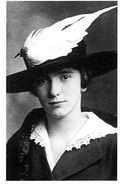
A thrilling account of Guy Bradley's boyhood plume-collecting trip for “the Frenchman” along the tip of Florida is Charles William Pierce's “The Cruise of the
Bonton,”
in
Tequesta,
published by the Historical Association of Southern Florida, vol. 22 (1962), pp. 3â62.
Bonton,”
in
Tequesta,
published by the Historical Association of Southern Florida, vol. 22 (1962), pp. 3â62.
Plume trade statistics come from Paul R. Ehrlich, David S. Dobkin, and Darryl Wheye, “Plume Trade” (
www.Stanfordalumni.org/birdsite/text/essays/Plume_Trade.html
).
www.Stanfordalumni.org/birdsite/text/essays/Plume_Trade.html
).
Roger Tory Peterson's boyhood birding experiences, including those with the Bronx County Bird Club, are found in Graham, pp. 129â35, and in Peterson's interview with the National Wildlife Federation, found at
www.nwf.org/internationalwildlife/peterson.html
, which contains the quotes on p. 54.
www.nwf.org/internationalwildlife/peterson.html
, which contains the quotes on p. 54.
Arthur “Doc” Allen's trip with his wife, Elsa, to Florida, where they saw the Ivory-bill in 1924, is reported in his article “Recent Observations on the Ivory-billed Woodpecker,” in
The Auk,
vol. 54 (April 1937), pp. 164â84. All quoted newspaper accounts of the trip and correspondence with Morgan Tindall are found in the Arthur Allen collection at Cornell University's Rare and Manuscript Collections Division (file number 21-18-1255, Box 2). Here, too, in an Associated Press story dated July 12, 1924, and headlined RARE BIRD REPORTED IN CENTRAL FLORIDA, I discovered Allen's quote on p. 56 that begins “As long as the state of Florida allows ⦔ A personal interview with the Allens' son David G. Allen provided additional information. The story about Allen's experiment with the eagle and the hen on pp. 54â55 came from George Miksch Sutton,
Bird Student
(Austin: University of Texas Press, 1980), p. 201.
The Auk,
vol. 54 (April 1937), pp. 164â84. All quoted newspaper accounts of the trip and correspondence with Morgan Tindall are found in the Arthur Allen collection at Cornell University's Rare and Manuscript Collections Division (file number 21-18-1255, Box 2). Here, too, in an Associated Press story dated July 12, 1924, and headlined RARE BIRD REPORTED IN CENTRAL FLORIDA, I discovered Allen's quote on p. 56 that begins “As long as the state of Florida allows ⦔ A personal interview with the Allens' son David G. Allen provided additional information. The story about Allen's experiment with the eagle and the hen on pp. 54â55 came from George Miksch Sutton,
Bird Student
(Austin: University of Texas Press, 1980), p. 201.
Chapter Six. Learning to Think Like a Bird
Learning about James Tanner's boyhood was one of the best parts of researching this book. Much of my information came from his widow, Nancy Tanner. I visited her at the small house in the wooded hills on the outskirts of Knoxville, Tennessee, that the Tanners shared for many years. Mrs. Tanner told me stories and trusted me with valuable materials. After that, we had three telephone interviews and dozens of e-mail exchanges. I also interviewed James's boyhood friend Carl McAllister several times, as well as the Tanners' son David. The Cortland, New York, Free Library maintains a small file on Tanner.
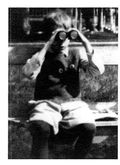
The lines from Emily Dickinson quoted at the opening of this chapter (p. 59) are from her poem 932, written in 1864. A colorful account of Cornell's McGraw Hall is found in George Miksch Sutton,
Bird Student
(Austin: University of Texas Press, 1980), pp. 209â16. The quote in the sidebar on p. 62 about the “Roughing-Out Room” appears in Sutton, p. 213. The quote on p. 65 beginning “the wildest of yells” is in Sutton, p. 210. Tanner's college transcripts, showing the courses he took and the (very good) grades he earned are found in his file at the Cornell University Rare and Manuscript Collections Division, as is information about where he lived and what it was like to be an ornithology student in those years. The account of the Monday night “seminar” came from an interview with Sally Hoyt Spofford.
Bird Student
(Austin: University of Texas Press, 1980), pp. 209â16. The quote in the sidebar on p. 62 about the “Roughing-Out Room” appears in Sutton, p. 213. The quote on p. 65 beginning “the wildest of yells” is in Sutton, p. 210. Tanner's college transcripts, showing the courses he took and the (very good) grades he earned are found in his file at the Cornell University Rare and Manuscript Collections Division, as is information about where he lived and what it was like to be an ornithology student in those years. The account of the Monday night “seminar” came from an interview with Sally Hoyt Spofford.
Information about the organization of the Cornell sound expedition came from the Web site of Cornell's Macaulay Library of Natural Sounds (
http://birds.cornell.edu/lns
) and from Arthur Allen's files at Cornell. Doc Allen's quote on p. 66 about the new kind of “hunting” expedition is from Allen's article “Hunting with a Microphone the Voices of Vanishing Birds,”
National Geographic,
vol. 71, no. 6 (June 1937), p. 697. Allen's description of Tanner as a “handy man” (on p. 67 and again in chapter 8, on p. 82) appears in the same article at p. 699, as well as on the second page of the introduction to the memoir of the expedition (see sources for chapters 7 and 8). Tanner's selection is also described in a newspaper article entitled “Cortland Student at Cornell Chosen to Take Part in Expedition to Study Rare Bird Life,” in Tanner's file at Cornell, Box 6 (see sources for chapter 9). Unfortunately, the newspaper is not identified, nor is the article dated.
http://birds.cornell.edu/lns
) and from Arthur Allen's files at Cornell. Doc Allen's quote on p. 66 about the new kind of “hunting” expedition is from Allen's article “Hunting with a Microphone the Voices of Vanishing Birds,”
National Geographic,
vol. 71, no. 6 (June 1937), p. 697. Allen's description of Tanner as a “handy man” (on p. 67 and again in chapter 8, on p. 82) appears in the same article at p. 699, as well as on the second page of the introduction to the memoir of the expedition (see sources for chapters 7 and 8). Tanner's selection is also described in a newspaper article entitled “Cortland Student at Cornell Chosen to Take Part in Expedition to Study Rare Bird Life,” in Tanner's file at Cornell, Box 6 (see sources for chapter 9). Unfortunately, the newspaper is not identified, nor is the article dated.
Chapter Seven. Shooting with a Mike
and
Chapter Eight. Camp Ephilus
and
Chapter Eight. Camp Ephilus
Dr. Boonsong Lekagul (1907â1992), the author of chapter 7's opening quote (p. 69), is revered as the father of Thailand's national park system. He began his connection with wildlife as a hunter, but put away his rifle when he realized many species were being slaughtered. During the 1950s and '60s he campaigned tirelessly for conservation in his war-torn land by writing letters and articles and by hosting a regular radio and television program. Frustrated that Thai prime minister Field Marshal Sarit Thanarat wouldn't believe that Thailand's forests were being destroyed, Dr. Boonsong arranged to take him on a helicopter ride over the ruined Dong Phaya Yen forest. Shortly afterward, Thailand created a law to protect hunted species, and, in 1962, passed its National Park Act. Dr. Boonsong's quote is from Mearns,
The Bird Collectors.
The Bird Collectors.
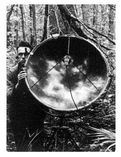
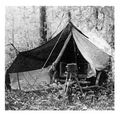
The memoir of the “BrandâCornell UniversityâAmerican Museum of Natural History Ornithological Expedition,” created by the participants, recounts this remarkable quest. It is a brilliant photographic record and includes an introduction by Doc Allen. Only a few copies of this bound memoir were made for those who went on the trip and a few others who supported the expedition. The only publicly available copy I know of is at the Cornell University Rare and Manuscript Collections Division.
Another rich source of information about the Cornell sound expedition is Arthur Allen's “Recent Observations on the Ivory-billed Woodpecker” (see sources for chapter 5). Here I found the Cornell team's journal entries presented in chapter 8âsee especially the quote at p. 81âand the story about the “crawling sawdust,” and, at p. 179, the “weak buzzing” quote from Allen that appears on p. 85. Another good source is Allen's “Hunting with a Microphone the Voices of Vanishing Birds,”
National Geographic,
vol. 71, no. 6 (June 1937), pp. 697â723. The story of Mason D. Spencer's shooting of an Ivory-bill (p. 70) is told by George Miksch Sutton in his
Birds in the Wilderness
(New York: Macmillan, 1936), including Spencer's quotes, at pp. 190â91. Likewise, Sutton's hook provided a firsthand account of the Cornell team's rediscovery of the Ivory-bill on pp. 191â96. Here I found the two quotes from J. J. Kuhn that appear on p. 73. Christopher Cokinos added sharp perspective in his account of the expedition in
Hope Is the Thing with Feathers.
Interviews with Nancy Tanner filled in many details, including the joy that Jim felt in being on the trip.
National Geographic,
vol. 71, no. 6 (June 1937), pp. 697â723. The story of Mason D. Spencer's shooting of an Ivory-bill (p. 70) is told by George Miksch Sutton in his
Birds in the Wilderness
(New York: Macmillan, 1936), including Spencer's quotes, at pp. 190â91. Likewise, Sutton's hook provided a firsthand account of the Cornell team's rediscovery of the Ivory-bill on pp. 191â96. Here I found the two quotes from J. J. Kuhn that appear on p. 73. Christopher Cokinos added sharp perspective in his account of the expedition in
Hope Is the Thing with Feathers.
Interviews with Nancy Tanner filled in many details, including the joy that Jim felt in being on the trip.
Emerson's quote opening chapter 8 (p. 79) comes from his address entitled “The Method of Nature,” published from “Addresses” in his
Nature: Addresses and Lectures
(Boston: Houghton Mifflin, 1849). Helpful information about the Taensa Indians appears in
The Catholic Encyclopedia,
vol. 14 (New York: Robert Appleton, 1912). Theodore Roosevelt's story of his visit to the Tensas swamp appeared as “In the Louisiana Canebrakes” in
Scribner's Magazine,
vol. 43, no. 1, pp. 47â60.
Nature: Addresses and Lectures
(Boston: Houghton Mifflin, 1849). Helpful information about the Taensa Indians appears in
The Catholic Encyclopedia,
vol. 14 (New York: Robert Appleton, 1912). Theodore Roosevelt's story of his visit to the Tensas swamp appeared as “In the Louisiana Canebrakes” in
Scribner's Magazine,
vol. 43, no. 1, pp. 47â60.
Information on the purchase of forested land in Madison Parish by Douglas Alexander of the Singer company came from Madison Parish Courthouse land records. Much information on Alexander and the Singer company appears in Don Bissell,
The First Conglomerate:
145
Years of the Singer Sewing Machine Company
(Brunswick, Me.: Audenreed Press, 1999).
The First Conglomerate:
145
Years of the Singer Sewing Machine Company
(Brunswick, Me.: Audenreed Press, 1999).
An account of one boy's experience of the terrifying black wall of dust that rose on April 8, 1935, is in my book
We Were There, Too! Young People in U.S. History
(New York: Farrar, Straus and Giroux, 2001), at pp. 196â98.
We Were There, Too! Young People in U.S. History
(New York: Farrar, Straus and Giroux, 2001), at pp. 196â98.
A videocassette of the Cornell team's recording of the Ivory-bill was made by Cornell University. It's amazing ⦠for a few ghostly seconds one can hear the great bird and see it move. One can also see Allen and Kellogg and catch a glimpse of Tanner as he stumbles through the mud behind Ike's wagon. Contact Cornell University's Rare and Manuscript Collections Division, Carl A. Kroch Library, Cornell University, Ithaca, NY 14853. The sound recording of the Ivory-bill may be accessed via the Cornell site (
http://birds.cornell.edu/ivory/
)âclick on “Listen to a clip of their recording.” It can also be found on Man-goverde World Bird Guide (
www.mangoverde.com/birdsound
).
http://birds.cornell.edu/ivory/
)âclick on “Listen to a clip of their recording.” It can also be found on Man-goverde World Bird Guide (
www.mangoverde.com/birdsound
).
Other books
Unknown Touch by Gina Marie Long
Aliomenti Saga 6: Stark Cataclysm by Alex Albrinck
Ten Days in a Mad-House by Nellie Bly
Love & Loyalty by Tere Michaels
Just a Queen by Jane Caro
Sweet Torture (Fated for Love) by Quince, Ella J.
Out of My Mind by White, Pat
Nolan: Return to Signal Bend by Susan Fanetti
Holy Scoundrel by Annette Blair
Sketchy by Samms, Olivia
